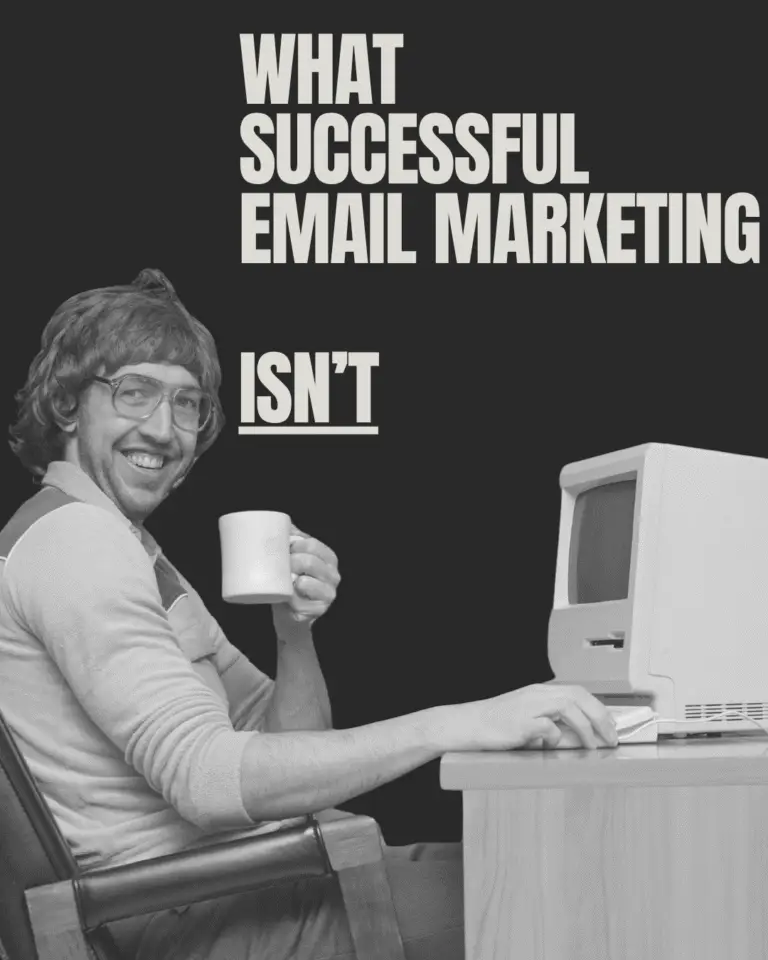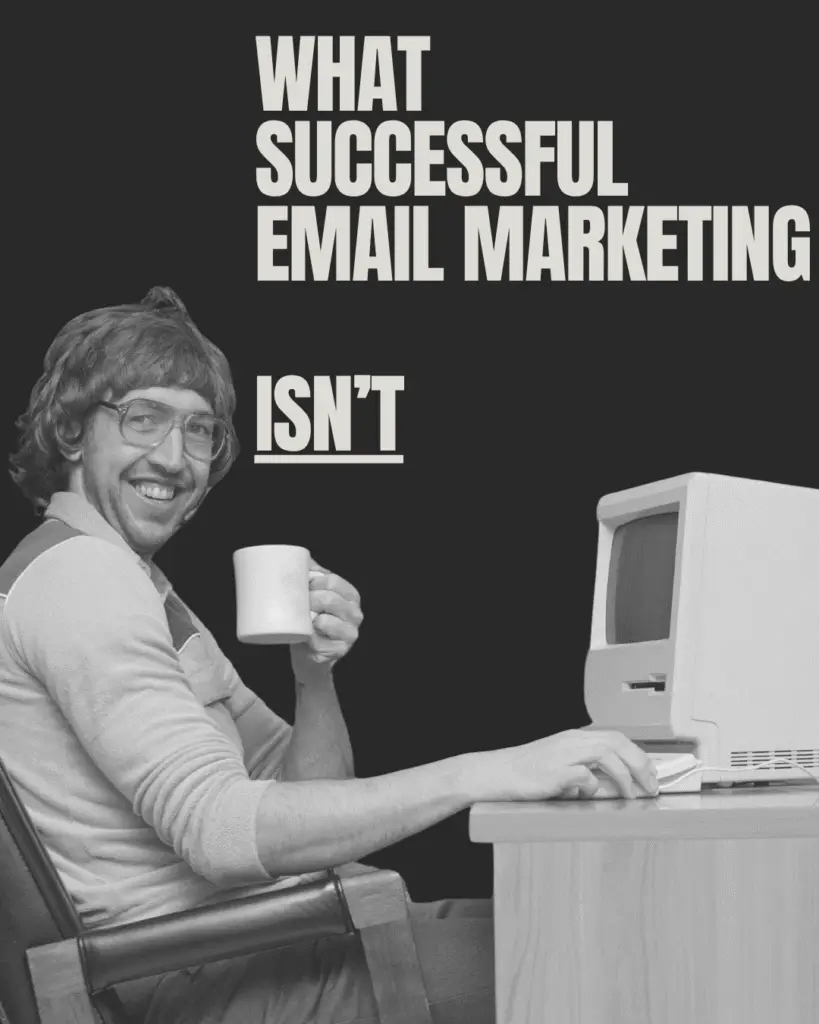What Successful Email Marketing ISN’T: Debunking Common Myths
Email marketing remains one of the highest ROI channels in digital marketing, yet many businesses struggle to see results. The problem often lies not in what they’re doing, but in fundamental misconceptions about what successful email marketing actually entails. Let’s examine what successful email marketing definitively is NOT.
It’s NOT About Blasting Everyone with Everything
One of the biggest myths is that successful email marketing means sending every message to your entire list. This spray-and-pray approach is actually counterproductive.
The Reality: Successful email marketing is highly targeted and segmented. It’s about sending the right message to the right person at the right time. Mass blasting leads to higher unsubscribe rates, spam complaints, and decreased engagement – all of which hurt your sender reputation and deliverability.
Instead of casting a wide net, focus on creating meaningful segments based on behavior, preferences, purchase history, and engagement levels. A smaller, engaged segment will consistently outperform a large, disinterested audience.
It’s NOT Just About Open Rates
Many marketers obsess over open rates as the ultimate measure of success, but this metric alone tells an incomplete story and can be misleading.
The Reality: Open rates are influenced by factors beyond your control, including email client privacy features that block tracking pixels. More importantly, an open doesn’t guarantee engagement or conversion. You could have a 40% open rate but zero sales if your content doesn’t resonate or your call-to-action is weak.
Focus instead on meaningful metrics like click-through rates, conversion rates, revenue per email, and list growth quality. These metrics better reflect whether your emails are actually driving business results.
It’s NOT About Constant Promotional Messages
The “always be selling” mentality is a fast track to subscriber fatigue and list churn. Successful email marketing isn’t about turning every touchpoint into a sales pitch.
The Reality: The most effective email programs follow the 80/20 rule – 80% valuable, educational, or entertaining content, and 20% promotional. Subscribers need to trust that opening your emails will provide value, not just another sales offer.
Build relationships first, sales second. Share industry insights, helpful tips, behind-the-scenes content, and user-generated content. When you do promote, it feels natural rather than pushy.
It’s NOT a Set-It-and-Forget-It Channel
Many businesses treat email marketing as a passive channel where they can automate everything and walk away. This hands-off approach rarely yields optimal results.
The Reality: Successful email marketing requires ongoing optimization, testing, and refinement. Consumer preferences change, inbox algorithms evolve, and what worked last quarter might not work today.
Regularly review your analytics, test different subject lines and send times, refresh your automation sequences, and clean your lists. Email marketing is a living, breathing channel that needs attention to thrive.
It’s NOT About Buying Email Lists
The temptation to purchase email lists for quick growth is strong, especially when organic list building feels slow. However, bought lists are a recipe for poor performance and potential legal issues.
The Reality: Purchased lists typically contain unengaged recipients who never opted in to hear from your brand. This leads to high bounce rates, spam complaints, and damage to your sender reputation. In many jurisdictions, emailing purchased lists violates privacy laws like GDPR and CAN-SPAM.
Focus on organic list building through lead magnets, content upgrades, contests, and website opt-ins. A smaller list of genuinely interested subscribers will always outperform a large list of unengaged contacts.
It’s NOT About Ignoring Mobile Optimization
With over 60% of emails opened on mobile devices, designing only for desktop is a critical oversight that many marketers still make.
The Reality: Successful email marketing prioritizes mobile-first design. If your emails don’t display properly on smartphones and tablets, you’re losing more than half your potential engagement.
Use responsive design templates, keep subject lines under 40 characters, ensure buttons are finger-friendly, and test across multiple devices and email clients before sending.
It’s NOT About Generic, One-Size-Fits-All Content
Sending the same generic newsletter to everyone on your list ignores the diverse interests and needs of your subscribers.
The Reality: Personalization goes far beyond inserting a first name in the subject line. Successful email marketing leverages behavioral data, purchase history, and stated preferences to deliver highly relevant content.
Create dynamic content blocks, recommend products based on browsing behavior, and tailor messaging to different customer lifecycle stages. The more relevant your emails, the higher your engagement rates.
It’s NOT About Ignoring Email Deliverability
Many marketers focus solely on content creation while neglecting the technical aspects that determine whether emails actually reach the inbox.
The Reality: All the brilliant content in the world is worthless if it lands in spam folders. Successful email marketing requires attention to sender reputation, authentication protocols (SPF, DKIM, DMARC), list hygiene, and engagement metrics.
Monitor your deliverability rates, maintain good sending practices, and work with reputable email service providers who prioritize inbox placement.
It’s NOT About Inconsistent Sending
Sporadic email sending – whether it’s radio silence for months followed by a flurry of messages, or wildly inconsistent send times – confuses subscribers and hurts engagement.
The Reality: Consistency builds trust and sets expectations. Whether you send weekly, bi-weekly, or monthly, stick to a predictable schedule. Subscribers should know when to expect your emails and what type of content they’ll contain.
Develop an editorial calendar and use automation to maintain consistency even during busy periods.
The Path Forward
Understanding what successful email marketing isn’t is the first step toward building campaigns that actually work. Focus on building genuine relationships with engaged subscribers, delivering consistent value, and continuously optimizing based on data rather than assumptions.
Remember: successful email marketing is about quality over quantity, relationship-building over hard selling, and strategic thinking over tactical execution. When you shift away from these common misconceptions, you’ll be well on your way to email marketing success that drives real business results.





